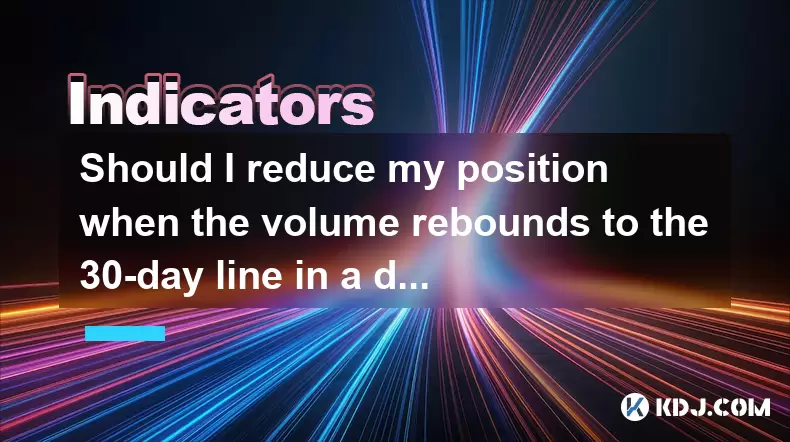-
 Bitcoin
Bitcoin $108,092.5658
-0.99% -
 Ethereum
Ethereum $2,546.4530
-1.12% -
 Tether USDt
Tether USDt $1.0000
0.01% -
 XRP
XRP $2.2676
0.12% -
 BNB
BNB $659.1616
-0.30% -
 Solana
Solana $148.8297
-1.97% -
 USDC
USDC $1.0000
0.02% -
 TRON
TRON $0.2874
-0.30% -
 Dogecoin
Dogecoin $0.1676
-3.64% -
 Cardano
Cardano $0.5765
-1.73% -
 Hyperliquid
Hyperliquid $37.2069
-6.18% -
 Bitcoin Cash
Bitcoin Cash $497.9918
-0.10% -
 Sui
Sui $2.8427
-2.26% -
 Chainlink
Chainlink $13.2689
-2.06% -
 UNUS SED LEO
UNUS SED LEO $9.0541
0.15% -
 Stellar
Stellar $0.2487
-0.92% -
 Avalanche
Avalanche $17.7710
-3.09% -
 Shiba Inu
Shiba Inu $0.0...01167
-1.28% -
 Toncoin
Toncoin $2.7488
-2.80% -
 Hedera
Hedera $0.1559
-2.28% -
 Litecoin
Litecoin $85.8945
-2.48% -
 Monero
Monero $316.0985
-2.09% -
 Dai
Dai $1.0001
0.02% -
 Polkadot
Polkadot $3.3481
-1.83% -
 Ethena USDe
Ethena USDe $1.0000
0.00% -
 Bitget Token
Bitget Token $4.2910
-3.04% -
 Uniswap
Uniswap $7.4131
-0.09% -
 Aave
Aave $280.9266
-2.67% -
 Pepe
Pepe $0.0...09816
-3.18% -
 Pi
Pi $0.4557
-2.29%
Should I reduce my position when the volume rebounds to the 30-day line in a downward trend?
Jun 30, 2025 at 07:42 am

Understanding Volume and Its Role in Cryptocurrency Trading
In cryptocurrency trading, volume is a critical indicator that reflects the number of assets traded over a specific period. When analyzing price trends, especially during a downtrend, traders often look at volume patterns to determine whether a reversal or continuation is likely. A rebound in volume to the 30-day average line may signal increased interest from market participants, but it doesn't automatically indicate a reversal of the downtrend.
Traders must distinguish between volume spikes caused by panic selling and those driven by institutional accumulation or retail buying pressure. During a downtrend, if volume increases significantly as prices fall, it typically suggests strong selling pressure. However, when price stabilizes near key support levels and volume rebounds, it might suggest that buyers are stepping in.
Interpreting the 30-Day Average Volume Line
The 30-day average volume line represents the mean volume over the past 30 days. It serves as a benchmark for determining whether current trading activity is above or below normal levels. In a downtrend, if volume rises back to this average, it could be an early sign of potential stabilization.
However, relying solely on volume can be misleading. Traders should cross-reference this with other indicators such as moving averages, RSI (Relative Strength Index), and on-chain data. For instance, if Bitcoin’s RSI drops below 30, indicating oversold conditions, and volume rebounds simultaneously, it might provide a stronger case for holding or even entering long positions rather than reducing exposure.
Why Some Traders Reduce Positions During Volume Rebounds
There are several reasons why traders may choose to reduce their positions when volume rebounds during a downtrend:
- Profit Taking: If a trader entered at higher levels and sees a temporary bounce, they may take partial profits off the table.
- Risk Management: Reducing position size can help mitigate further downside risk, especially if the bounce lacks momentum.
- Volatility Concerns: High volume during a downtrend can sometimes precede more volatility, which may not align with a trader's strategy.
It's crucial to assess market sentiment and news cycles before making such decisions. Sometimes, positive news about a project or broader macroeconomic developments can trigger short-term rallies even within a bearish trend.
How to Evaluate Whether to Reduce Position Size
Deciding whether to reduce your position involves a multi-step analysis process. Here’s how you can approach it:
- Analyze Price Action: Look at candlestick formations around the volume rebound. Are there signs of rejection at key resistance levels?
- Check Technical Indicators: Use tools like MACD, Bollinger Bands, and Fibonacci retracements to confirm or deny strength.
- Review On-Chain Metrics: Platforms like Glassnode or Santiment offer insights into whale movements, exchange inflows/outflows, and holder behavior.
- Evaluate News Impact: Was the volume surge triggered by a specific event? Did major exchanges announce new listings or delistings?
For example, if a coin experiences a sudden spike in volume after being delisted from a major exchange, it’s usually a sell-off rather than a rally. Conversely, a surge following a positive development might warrant holding or even adding to the position.
Case Study: Volume Rebound in Ethereum During a Downtrend
Let’s examine a real-world scenario involving Ethereum (ETH). Suppose ETH has been in a downtrend for several weeks, and suddenly, volume jumps back up to its 30-day average. The immediate reaction from many traders might be to reduce exposure due to uncertainty.
Upon closer inspection:
- On-chain metrics show increased stablecoin inflows, suggesting possible buying pressure.
- RSI begins to rise from oversold territory, indicating a potential shift in momentum.
- Short-term moving averages flatten, signaling a pause in the downtrend.
These factors collectively suggest that while the downtrend hasn’t reversed, the volume rebound might mark a consolidation phase. Instead of reducing the entire position, a trader might consider scaling out gradually or setting trailing stop losses to protect gains without exiting entirely.
Strategies for Managing Risk in a Downtrend
Managing risk effectively is essential when navigating downtrends. Consider implementing these strategies:
- Position Sizing: Only allocate a percentage of your portfolio to any single asset, regardless of confidence level.
- Stop-Loss Orders: Use stop-losses to limit potential losses, especially during high-volume events.
- Hedging: Utilize derivatives or inverse ETFs to hedge against downside risk without fully exiting positions.
- Diversification: Spread investments across multiple cryptocurrencies and sectors to reduce exposure to any one asset.
By applying these techniques, traders can maintain flexibility and avoid emotional decision-making during volatile periods.
Frequently Asked Questions
Q1: What does it mean when volume returns to the 30-day average during a downtrend?
A return of volume to the 30-day average during a downtrend indicates renewed trading activity. It could suggest either continued selling pressure or the entry of buyers testing support levels. Further technical and fundamental analysis is needed to interpret the signal accurately.
Q2: Should I always reduce my position when volume spikes downward?
Not necessarily. A volume spike can reflect either panic selling or accumulation depending on the context. Analyze price action, chart patterns, and external news before deciding whether to reduce your position.
Q3: How can I differentiate between a volume-driven rebound and a genuine trend reversal?
Look for confluence among indicators—such as moving averages, RSI, and order book depth—and monitor on-chain data. Genuine reversals often come with sustained volume increases and bullish candlestick patterns.
Q4: Can volume alone be used as a reliable trading signal?
Volume should never be used in isolation. It works best when combined with price action, momentum indicators, and market sentiment. Using volume without additional confirmation can lead to false signals and poor trading decisions.
Clause de non-responsabilité:info@kdj.com
Les informations fournies ne constituent pas des conseils commerciaux. kdj.com n’assume aucune responsabilité pour les investissements effectués sur la base des informations fournies dans cet article. Les crypto-monnaies sont très volatiles et il est fortement recommandé d’investir avec prudence après une recherche approfondie!
Si vous pensez que le contenu utilisé sur ce site Web porte atteinte à vos droits d’auteur, veuillez nous contacter immédiatement (info@kdj.com) et nous le supprimerons dans les plus brefs délais.
-
 ICNT Échangez maintenant
ICNT Échangez maintenant$0.3182
30.31%
-
 M Échangez maintenant
M Échangez maintenant$0.2011
23.43%
-
 SOLO Échangez maintenant
SOLO Échangez maintenant$0.3788
17.55%
-
 HSK Échangez maintenant
HSK Échangez maintenant$0.7010
17.49%
-
 SHX Échangez maintenant
SHX Échangez maintenant$0.0116
15.42%
-
 COREUM Échangez maintenant
COREUM Échangez maintenant$0.1392
8.59%
- Bitcoin Solaris Market Launch: A New Dawn or Just Another Altcoin?
- 2025-07-08 20:30:12
- Bitcoin, Memecoin Mania, and the All-Time High Hunt: What's Next?
- 2025-07-08 20:30:12
- Byrq Coin: Scam or Savior? A Deep Dive Review
- 2025-07-08 20:50:12
- Shiba Inu's Burn Rate Bonanza: Can Crypto Burns Ignite a Price Rally?
- 2025-07-08 20:50:12
- Telekom, injectif et validateurs: une plongée profonde dans la sécurité et la croissance du réseau
- 2025-07-08 21:10:12
- ROM: Golden Age - un demi-million de pré-registrations et un butin crypto!
- 2025-07-08 21:15:12
Connaissances connexes

How to trade Dogecoin based on funding rates and open interest
Jul 07,2025 at 02:49am
<h3>Understanding Funding Rates in Dogecoin Trading</h3><p>Funding rates are periodic payments made to either long or short traders ...

What is the 'God Mode' indicator for Dogecoin
Jul 07,2025 at 04:42pm
<h3>Understanding the 'God Mode' Indicator</h3><p>The 'God Mode' indicator is a term that has emerged within cryptocurrency trading ...

Using Gann Fans on the Dogecoin price chart
Jul 07,2025 at 09:43pm
<h3>Understanding Gann Fans and Their Relevance in Cryptocurrency Trading</h3><p>Gann Fans are a technical analysis tool developed b...

How to spot manipulation on the Dogecoin chart
Jul 06,2025 at 12:35pm
<h3>Understanding the Basics of Chart Manipulation</h3><p>Chart manipulation in the cryptocurrency space, particularly with Dogecoin...

Dogecoin market structure break explained
Jul 07,2025 at 02:51am
<h3>Understanding the Dogecoin Market Structure</h3><p>Dogecoin, initially created as a meme-based cryptocurrency, has evolved into ...

How to backtest a Dogecoin moving average strategy
Jul 08,2025 at 04:50am
<h3>What is a Moving Average Strategy in Cryptocurrency Trading?</h3><p>A moving average strategy is one of the most commonly used t...

How to trade Dogecoin based on funding rates and open interest
Jul 07,2025 at 02:49am
<h3>Understanding Funding Rates in Dogecoin Trading</h3><p>Funding rates are periodic payments made to either long or short traders ...

What is the 'God Mode' indicator for Dogecoin
Jul 07,2025 at 04:42pm
<h3>Understanding the 'God Mode' Indicator</h3><p>The 'God Mode' indicator is a term that has emerged within cryptocurrency trading ...

Using Gann Fans on the Dogecoin price chart
Jul 07,2025 at 09:43pm
<h3>Understanding Gann Fans and Their Relevance in Cryptocurrency Trading</h3><p>Gann Fans are a technical analysis tool developed b...

How to spot manipulation on the Dogecoin chart
Jul 06,2025 at 12:35pm
<h3>Understanding the Basics of Chart Manipulation</h3><p>Chart manipulation in the cryptocurrency space, particularly with Dogecoin...

Dogecoin market structure break explained
Jul 07,2025 at 02:51am
<h3>Understanding the Dogecoin Market Structure</h3><p>Dogecoin, initially created as a meme-based cryptocurrency, has evolved into ...

How to backtest a Dogecoin moving average strategy
Jul 08,2025 at 04:50am
<h3>What is a Moving Average Strategy in Cryptocurrency Trading?</h3><p>A moving average strategy is one of the most commonly used t...
Voir tous les articles

























































































